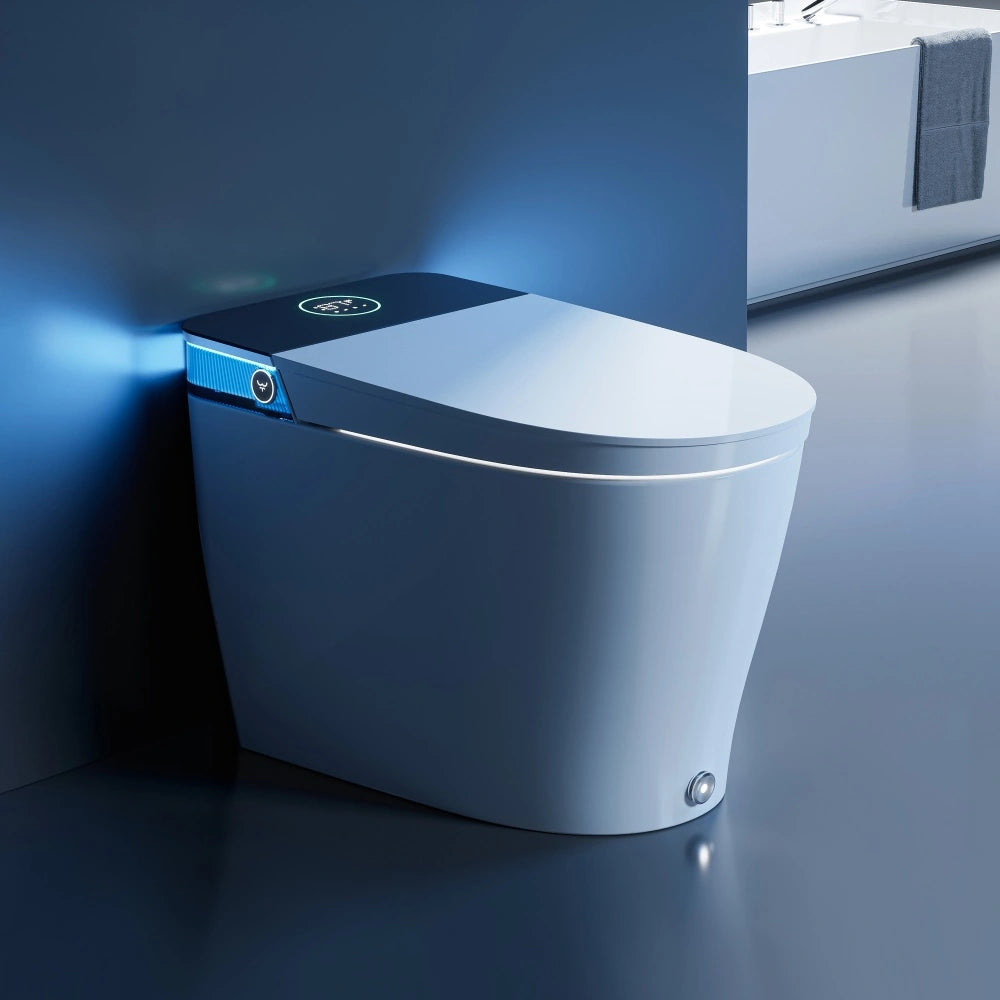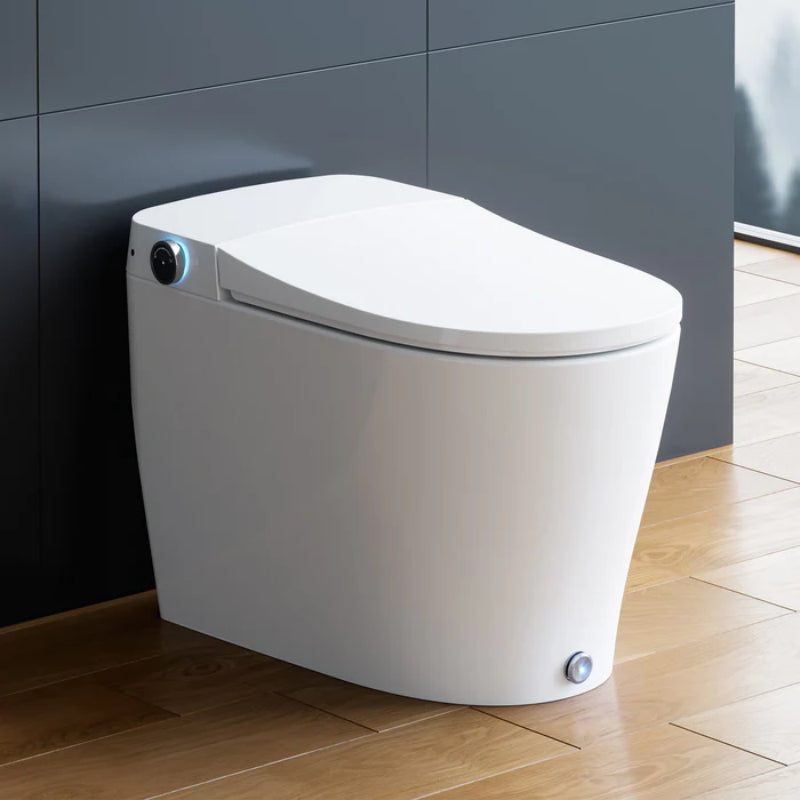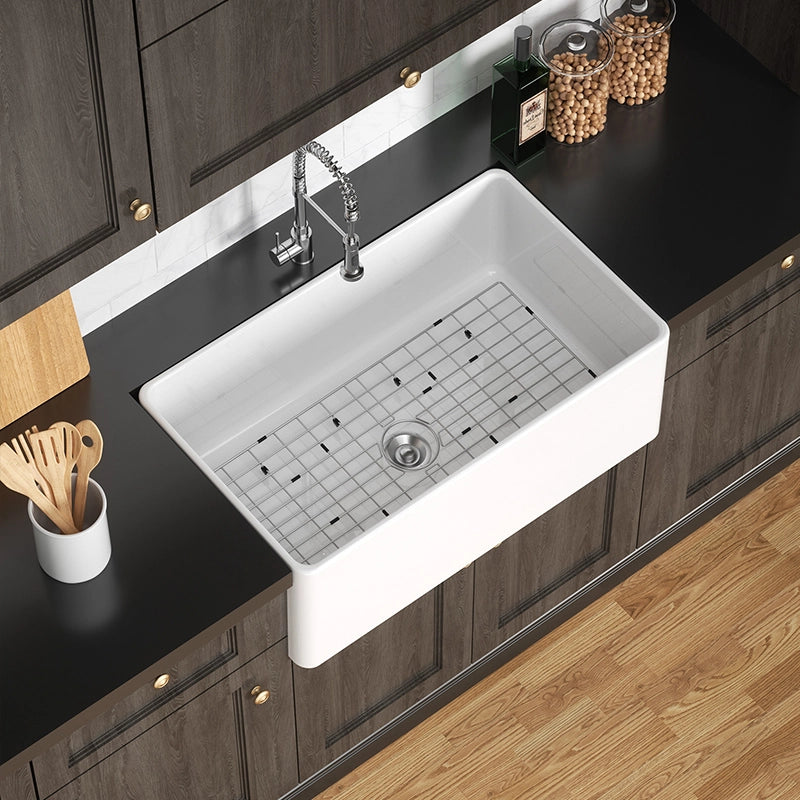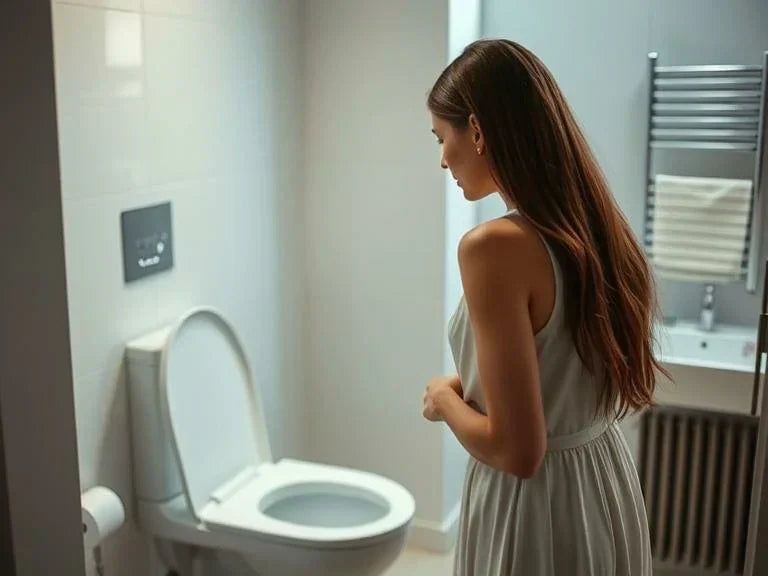Are you ready to tackle a bathroom renovation project on your own? Installing a bathroom sink may seem like a difficult task, but it can be done with the right instructions. It saves money and gives you a great feeling of accomplishment. This guide will show you how to install a bathroom sink step by step, and make your DIY project a success.
The installation of a sink represents an essential skill for anyone who wants to enhance their bathroom appearance or functionality. The process of installing a sink requires basic knowledge. Your bathroom improvement journey begins now with both confidence and ease.

Preparing for Installation
The installation of your bathroom sink requires proper preparation before beginning work. The selection of appropriate sink components along with all necessary tools and materials stands as a fundamental requirement. This bathroom sink installation guide provides essential information to help you select the correct components and prepare all necessary materials.
Choosing the Right Bathroom Sink:About Plumber system
Selecting the right sink requires both aesthetic appeal and operational requirements. The sink needs to match your bathroom space regardless of whether it serves as a powder room or master bath. Consider the dimensions together with the form and design. The market offers various sink choices which include pedestal sinks and under-mount and vessel designs.
Our sink installation guide contains information about selecting sinks that match your plumbing system and fulfill your requirements.
Tools and Materials You’ll Need To Replace
The correct selection of tools for bathroom sink installation remains essential. Start by gathering all necessary items before beginning your work.
- Adjustable wrench
- Plumber’s tape
- Sealant
- Supply lines
- Bucket
- Level
Having these tools needed for bathroom sink installation ready will help you work smoothly. This bathroom sink installation guide will help you complete the job with confidence, ensuring a professional look.
Step-by-Step Installation Guide
Starting your DIY bathroom sink project? This guide offers simple steps to install a bathroom sink. It also includes clear instructions for mounting the sink. Follow these steps for a smooth installation process.
Step 1 – Turn Off the Water Supply
The first step is to shut off your water supply. Turn the water valves under your sink clockwise until they stop. Check by turning on the faucet to make sure there’s no water.
Step 2 – Remove the Old Sink (if applicable)
Begin your sink replacement by disconnecting both supply lines and drain pipe. Use a wrench to remove the sink nuts which secure the sink to the countertop. Carefully lift the sink out after you loosen it to prevent any damage.
Step 3 – Position and Secure the New Sink
The installation of your new sink requires immediate attention. Apply silicone around the sink opening on the countertop. Position the sink correctly while ensuring it remains level and stable. Consult the sink mounting instructions provided by the manufacturer for particular installation requirements.
Step 4 – Connect Plumbing
The last step is to connect the plumbing. Connect the water supply lines to the valves and tighten them well. Check that the drain pipe fits right without leaks. If you are unsure, look at the plumbing instructions. Turn on the water and check for leaks, making any needed adjustments.

Tips for a Successful Sink Installation: A New Bathroom For You
The installation of a bathroom sink seems complicated at first but proper methods and careful attention to detail will turn it into a rewarding DIY project. The correct installation procedures lead to both proper fitment and leak prevention and misalignment avoidance and cost-effective future repairs. The following expanded tips will guide you through the process to achieve both effective and long-lasting results.
Measuring Twice, Cutting Once
The sink installation requires precise measurements which the old saying "measure twice cut once" specifically emphasizes. The proper measurement of your sink dimensions determines its correct fit inside your vanity or countertop or wall space. Check the dimensions of your sink and installation area twice before starting any cutting or drilling operations. The installation process requires you to consider both faucet placement and drain positioning and surrounding cabinetry dimensions. The paper or cardboard template that comes with your sink serves as an essential tool to guide hole cutting operations and mounting hardware placement. The serious approach to this step reduces the need to redo your work and replace expensive materials.
Common Mistakes to Avoid
Even the most experienced DIYers can make mistakes during installation. Knowing these common mistakes will help you save time, effort, and money.
Skipping Sealant Application: The installation process requires proper sealing as one of its essential steps. Water will penetrate under the basin when a suitable waterproof sealant is not applied around the sink edges which results in swelling and mold growth and eventually leads to structural damage. A bead of silicone or suitable sealant should be applied between the sink and countertop or wall before smoothing it out to achieve a watertight seal.
Overtightening Plumbing Connections: The urge to tighten every nut and bolt to the maximum is strong but doing so can actually damage pipes and fittings and even the sink itself. This is especially true for plastic connectors, which are more prone to cracking. Start by hand tightening the connections and then use a wrench to add a final secure turn—just enough to create a snug fit without stressing the components.
Neglecting Leveling: An uneven sink can cause poor water drainage, water pooling, and long-term wear on one side of the basin. Before finalizing your installation, use a level tool to check if the sink is aligned both side-to-side and front-to-back. If adjustments are needed, make them before securing the sink permanently. For wall-mounted sinks, use anchors or shims if necessary to ensure a perfect level.
Additional Tips for a Smooth Installation
Before starting the installation you should turn off your home’s water supply to prevent unexpected situations. A towel or bucket should be placed nearby to catch any remaining water in the lines. The installation process will be more efficient if you prepare all necessary tools including adjustable wrenches and plumber’s tape and sealant and mounting hardware.
Follow the manufacturer instructions for proper alignment and installation of your new sink if it comes with an integrated overflow or pop-up drain. The manufacturer designed these features for convenience and safety but proper setup is necessary for them to work correctly.
Following these best practices and avoiding shortcuts while taking your time will result in a clean and secure sink installation that looks great. These tips will help you complete the job correctly on your first attempt whether you have installation experience or not.ake your DIY project smooth and efficient.

When Should You Replace a Bathroom Sink?
Although this thing is quite durable, use a decade or even decades will not be a problem, but really do not have to wait until it strike to do it. Many people change the sink is to make the bathroom value upgrade or function more smoothly, especially in the big renovation, change the style of the time -- such as installed a new countertops or bathroom cabinets, along the way to change a sink, the overall look more coordinated and bright.
However, if there are a few situations, you need to seriously consider changing the sink:
1. Rust or Corrosion
Metal sink with a long time easy to rust, corrosion, looking patchy and ugly not to mention, over time will also affect the solidity of the sink, and even hide dirt affecting health. Imagine washing your hands when you see the rusty sink side, the mood has to be discounted, change!
2. Cracks or Other Damage
Sink cracks, cracks can not be careless, even if it is a small seam, not only will make the sink more and more durable, but also may sneak water leakage, breeding bacteria. Look at the good sink suddenly broken, with all the unsettling, early change early peace of mind.
3. Frequent Drain Clogs
Sink drainage is getting slower and slower, and even frequent clogging, even after a few passes or the same old thing? This may be the aging of the pipeline or drainage components do not work. Every time you wash your hands and face have to wait for the water to slowly seep, anxious temper simply to collapse, this add blockage of the sink to stay why?
4. Low Water Volume
The old sink with a faucet or drainage device, may still be used in the early years to limit the flow of water design, the water is as thin as squeezing toothpaste like, wash your hands have to wait for half a day, both inconvenient and time-consuming. Catch up now are concerned about water conservation and efficiency, we also have to let the sink to keep up with the times is not it?
5. Outdated Design
If the sink style has long been out of date, and the entire bathroom style does not match, look like old mixed into the fashion circle, then change the sink is definitely a shortcut to enhance the bathroom value. Change a new model, the whole space instantly new, wash every day are in a good mood.
Of course, some small problems can be repaired, such as to have scratches on the ceramic sink re-glazed, change a rusty drain, but if the sink problem a whole lot, or obviously old, new instead of more cost-effective choice. New sinks not only look beautiful, more functional, but also save water, how to calculate are worth! Don't hesitate to take the plunge, let the bathroom say goodbye to the dragging feet sink, fresh and good use is the hard truth!
How Much Does It Cost to Install a New Bathroom Sink?
How much does it really cost to replace a bathroom sink in your home and have it installed by a professional? Most people will probably come across quotes of $250 to $650, but the exact cost depends on the type of sink, the difficulty of the installation, and where you live. There's a lot that goes into this, so let's go over it one by one.
Sink Type Directly Affects Your Budget
Pedestal sinks are the least expensive: These sinks are simple in design and don't require a lot of work on the countertop, making them the most cost-effective option for families with limited budgets, and they don't hurt your wallet when they're installed.
Embedded sink cost-effective: directly to the bathroom cabinet or countertop in the cutout on the line, easy to install and cheap, suitable for friends who want to save money.
Farmhouse sinks are costly: like farmhouse style apron sinks, or designer models, just the sink itself is a lot more expensive than the regular models. Installation may also require plumbing changes and custom cabinetry, and it's not uncommon to spend hundreds of dollars more before and after. If you're looking for a unique style, be prepared to spend more.
Remodeling Strategies Can Save Big
If you're giving your bathroom a major renovation, it's recommended that you bundle the sink replacement with other projects. For example, if you change the bathtub, shower, bathroom cabinets or countertops at the same time, many contractors will give package deals. The master will be able to handle more than one job at a time, so the labor cost can naturally come down with higher efficiency. For example, replacing a sink alone might cost $500, but doing it along with the overall remodel might save you a couple hundred, the equivalent of picking up a big meal for nothing!
Plumbing Conditions Determine Extra Expenses
If there's nothing wrong with the plumbing in your home and the plumber just installs it, the cost is naturally low. But if the pipes have to be rearranged, or to repair the breakage of the old pipes, it's a problem -- the master will have to spend more time to deal with these hidden works, and the cost will go up. So it's important to check the condition of the pipes in advance, don't wait for the work to start before you realize the pit and end up spending more money than necessary.
The cost of replacing the sink is flexible, want to save money on the basic models, bundled decoration projects; want to pursue personality, you have to accept a higher cost. Planning well in advance, both to make the bathroom beautiful, but not to spend money, why not?
FAQ
1. Can you install a bathroom sink yourself?
The replacement of a bathroom sink becomes achievable for anyone who conducts thorough research and uses proper tools while following detailed instructions even without plumbing background. The process of DIY sink installation becomes rewarding for patients who pay attention to details while saving money on labor expenses.
The process of installing a sink proves to be more complicated than what appears at first glance. The replacement process requires you to disconnect old pipes while properly aligning and sealing new parts to ensure all components fit together without any leaks. A single error in pipe alignment or sealant application can result in water damage which requires expensive repair work.
DIY sink installation becomes possible for those who demonstrate care and patience along with a willingness to learn. When you encounter confusion about plumbing connections or sealing do not attempt to guess. Call a pro. A small service fee costs less than the expense of fixing major problems that develop later.
2. What holds a bathroom sink in place?
Bathroom sinks require multiple components for installation based on their type and installation method. The following are the usual fixing methods:
Adhesive or Caulk: The edges of most sinks receive waterproof protection through adhesive or silicone caulk. The sink remains secure while the seal prevents water from entering from beneath.
Mounting Clips or Brackets: The metal clips or brackets which come with undercounter and undermount sinks serve to attach the sink to the countertop from below thus providing stability and preventing future movement.
Screws or Bolts: Sinks that are wall-mounted or post sinks require screws or bolts to attach directly to wall studs or floor brackets for solid support.
These components work together to maintain sink stability while preventing leaks and proper alignment on vanity or countertop surfaces.
3. Do I need a plumber to install a bathroom sink?
The installation of a bathroom vanity demands only fundamental carpentry abilities yet sink installation functions as a plumbing task which needs specialized expertise. The sink needs correct water supply and drain system connections and leak prevention seals and proper water flow adjustment for successful installation.
You can attempt the replacement of a sink with matching plumbing connections if you possess basic DIY skills. Moving pipes or working with corroded or old pipes or when you are unsure about the installation process requires hiring a licensed plumber. The plumber will prevent both expensive errors and water damage by performing the work according to code standards and safety protocols.
4. How long does it take to install a bathroom sink?
A professional can complete bathroom sink installation within 1 to 2 hours based on the project complexity. Their extensive experience with sink installation makes their speed and precision nearly unbeatable.
The process differs significantly for DIY individuals compared to professionals. Homeowners who prepare and research before starting a basic sink installation project usually need 4 to 5 hours to complete it. More installation of a prefab vanity requires 6 to 8 hours of work but may extend to a full day when you need to perform adjustments for leveling or pipe work.
The right tools combined with clear instructions and a step-by-step method enable An error occurred while processing your request. Please try again.
5. What tools and materials do I need for installing a bathroom sink?
You will need a wrench, plumber's putty, sealant, and supply lines. Don't forget a new sink. Having everything ready will make the installation smoother.








Leave a comment
This site is protected by hCaptcha and the hCaptcha Privacy Policy and Terms of Service apply.